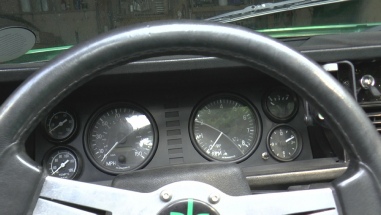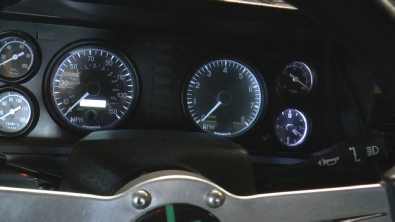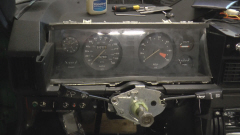 Home
Home














I have replaced the dials on my TR7 in one or two stages. The originals look cheap (in my opinion) and the clock didn’t work there was not oil pressure gauge and the voltmeter was pretty useless. Also, in spite of following the advice of Roger Williams in How to Improve Triumph TR7 etc. I couldn’t get the rev counter to work with the Megajolt ignition. So I upgraded the gauges to individual units. I persuaded the works of the old fuel gauge to fit in the case of an old oil gauge and that worked well.
However, I saw an article on the web about driving a tiny stepper motor used in instrument clusters and decided to try to make a fuel gauge with 270 degree sweep to match the other dials. I also wanted to make the gauge more accurate and avoid the deliberate “feature” incorpoprated into most fuel gauges that causes them to go down rather slowly when the tank is nearly full and rapidly when it is nearly empty. (This is built in, apparently, to stop drivers being disappointed that fuel is immediately consumed after they have just spent so much money filling up the tank!) I wanted the gauge to have a linear calibration with respect to the contents of the tank. This is not so easy to achieve. The tank may not be cuboid (it may be sloped to ensure petrol drains efficiently to the outlet) and the sensor or tank sender (which is a float-
Next, some details of the design and construction.
Fuel gauge